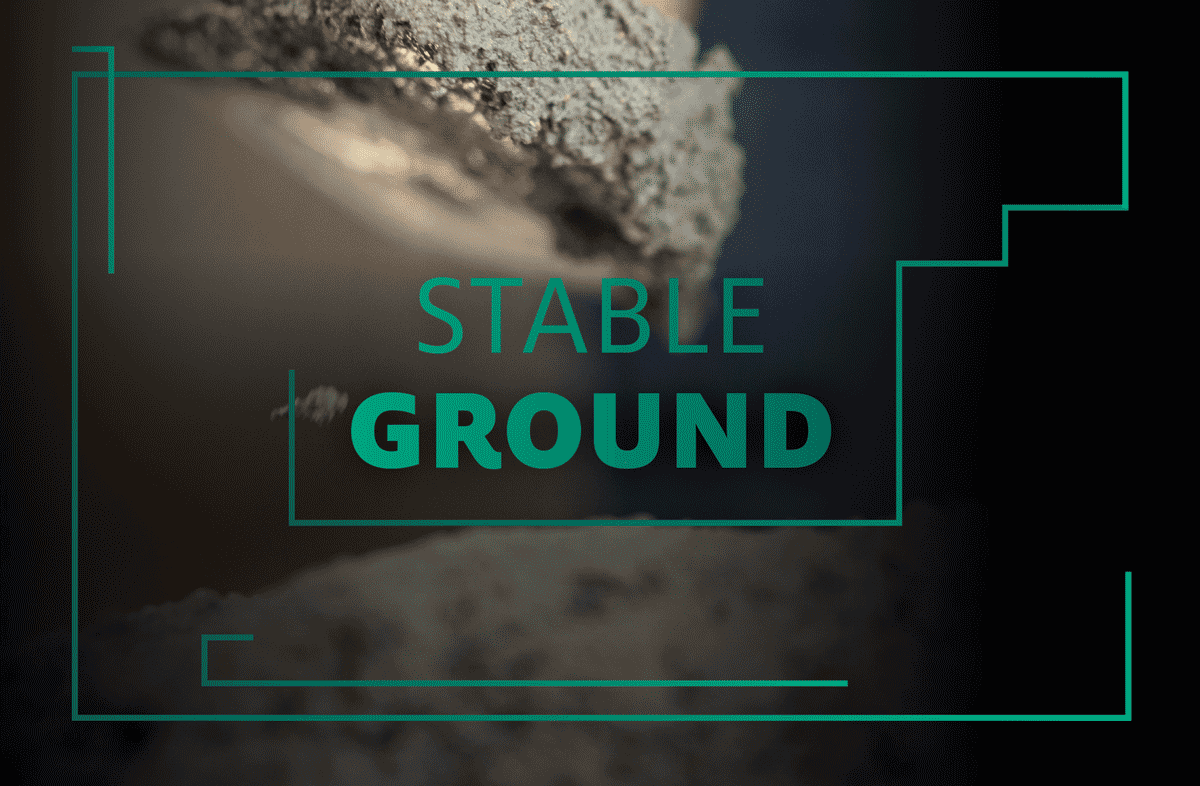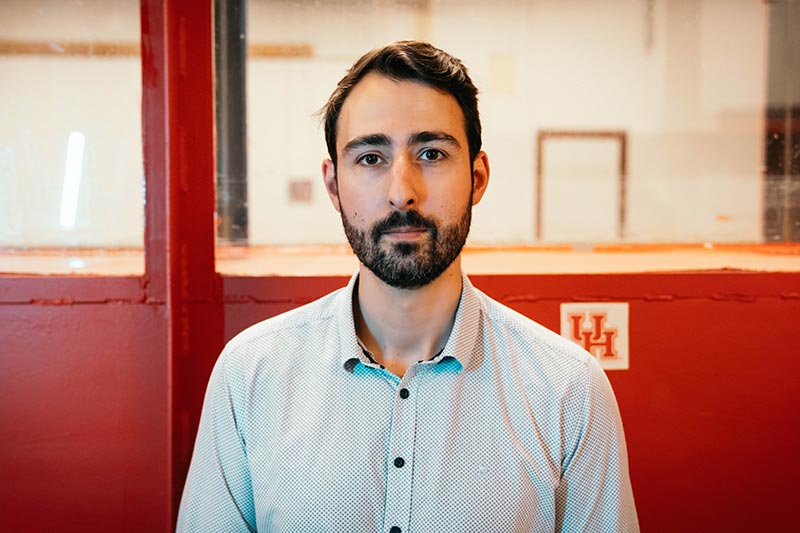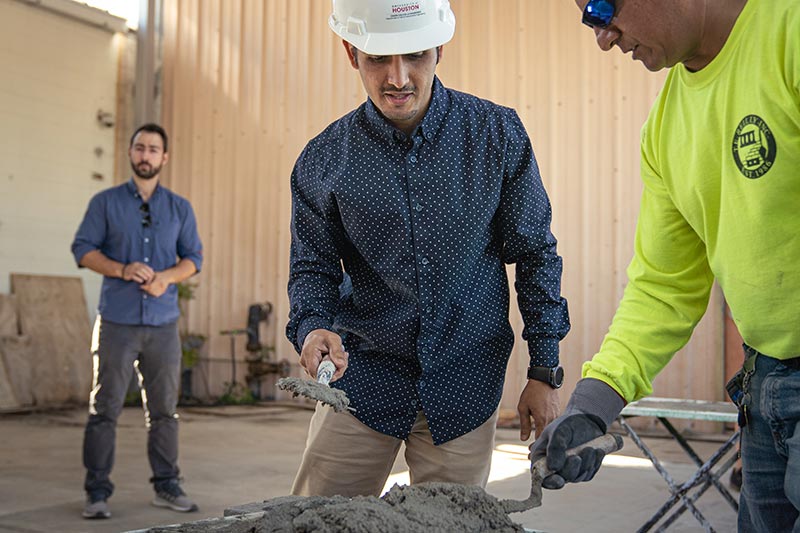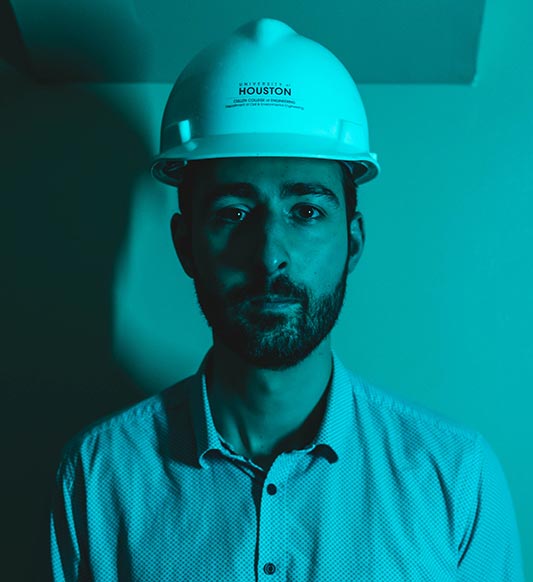
By Stephen Greenwell
 Dimitrios Kalliontzis |
Many academics, can be comfortable sticking strictly to their laboratory, or making incremental improvements to existing research, but that's never been the mindset for Dimitrios Kalliontzis, Assistant Professor of Civil and Environmental Engineering — and that's part of why the Cullen College of Engineering was so appealing to him.
For Kalliontzis, he wants the challenge of tackling new problems that haven't been considered before, and bridging the gap between theoretical knowledge, laboratory work and best practices in the field.
“I'm not a fan of trying to slowly refine problems that have already been addressed to some degree,” he said. “I'm more interested in problems that are new, that nobody has touched on. This is how I want to shape my career on this, which is the reason why I've selected the topics I'm working on right now.”
Kalliontzis added, “This is something, to be honest, that we as civil engineers in the structures area, where we produce research, then sometimes research goes into design codes, but then nobody's actually putting it into practice. So how can we bridge this gap? How can we make sure that the technology that we have developed is being applied in practice? In the structural engineering discipline, there is a big gap of where the industry is, and where we are. One of my goals is to bridge this gap.”
Current Research Goals
 Dimitrios Kalliontzis oversees a graduate student working on Masonry Day, a hands-on day of construction work. |
Kalliontzis identified two main areas of research that he's pursuing currently.
“One is on Ultra-High-Performance Concrete and Masonry Structures, where I'm looking for new materials, and how to integrate them into the existing knowledge,” he said. “The second area is slightly different, but not completely unrelated, and relates to the fluid structure interaction phenomena. This area is relatively new, there isn't much knowledge currently in the United States or globally, on how structures act with fluid flows, like from hurricanes or tornadoes.”
Kalliontzis said this was especially important, considering that according to NOAA, about 40 percent of the American population lives near a coastline.
“Most people are moving or migrating toward the coasts, and therefore it becomes more and more critical to invest in resiliency for coastal structures and their ability to resist waves,” he said. “In general, my research falls under the umbrella of what we call structural resiliency. I feel that resiliency is what will get our infrastructure to the next generation of technology — to build structures that are not only able to resist extreme events, but are robust and durable in the long term, and that won't need much repair after significant events.”
Earlier this year, Kalliontzis received a pair of grants from the American Concrete Institute and the Prestressed Concrete Institute to study shear design of Ultra-High-Performance Concrete. One of his students, Omar Khalid, also earned a national award, the Paul and Helen Lenchuck Scholarship administered by the National Concrete Masonry Association.
Academic Influences
 |
Kalliontzis studied rocking wall systems while doing research as a master's student, but it was more the lack of information — discovering the unknown — that got him interested in doing more and drives him now.
“This was my first introduction to structural resiliency, and that got me motivated,” he said. “What gets me motivated though is the gap. There is a significant gap of knowledge. There is a lot of lot to be understood. This is what is intriguing, and it's an area that can actually make immediate impact to our society.”
Kalliontzis identified three of his former professors as significant influences. First was his master's advisor, Sri Sritharan — Assistant Dean for Research and Wilkinson Chair Professor of Interdisciplinary Engineering at Iowa State University. Then, there was Arturo E. Schultz, formerly of the University of Minnesota — where Kalliontzis earned his doctorate — and who is now the Director of the School of Civil & Environmental Engineering and Construction Science at the University of Texas at San Antonio. Finally, there was Benson P. Shing, Distinguished Professor at the UC San Diego Jacobs School of Engineering.
“I think those three are the ones that influenced my way of thinking,” he said. “They shaped my background and foundation, as a researcher and as an engineer. The strongest educational influences were the interactions I had with those three individuals. They are my mentors even today, being very helpful anytime I need them.”
I'm not a fan of trying to slowly refine problems that have already been addressed to some degree. I'm more interested in problems that are new, that nobody has touched on. Dimitrios Kalliontzis
Kalliontzis stressed that he was always looking for more collaborators when it came to research, in addition to items that he worked on by himself.
“I'm constantly developing collaborations with other universities, and even inside the school, I always get involved with interdisciplinary projects,” he said. “A lot of the problems we have in research that also reflect societal needs are interdisciplinary. Nowadays, it's hard to say that you can completely address a problem on your own.”
The University of Houston was appealing to Kalliontzis because of some of its unique equipment, as well as the feeling he got from the department.
“When I was first interviewed here, there's a lot of complimentary research from the existing faculty structure, and I found good collaborators and a great environment that aligned very well with my research goals. Houston is an area that the infrastructure suffers from hurricanes, an area that correlates well with my research. Also, the infrastructure and laboratories here are unique. The Universal Panel Tester that exists in the lab is unique equipment. It is the only one of its kind in the United States.”
